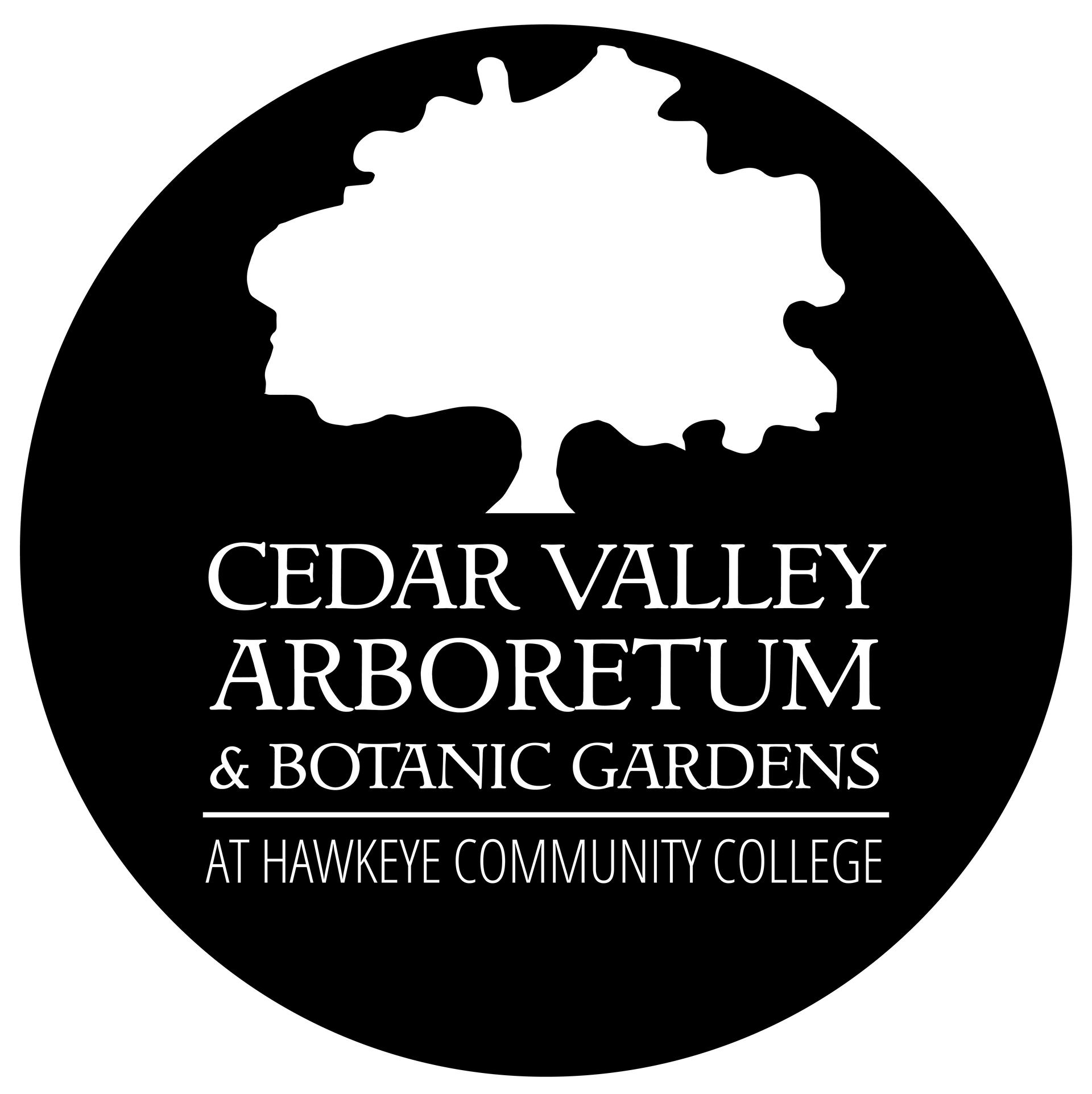Explore the Natural Beauty of our Gardens
The Grounds & Gardens
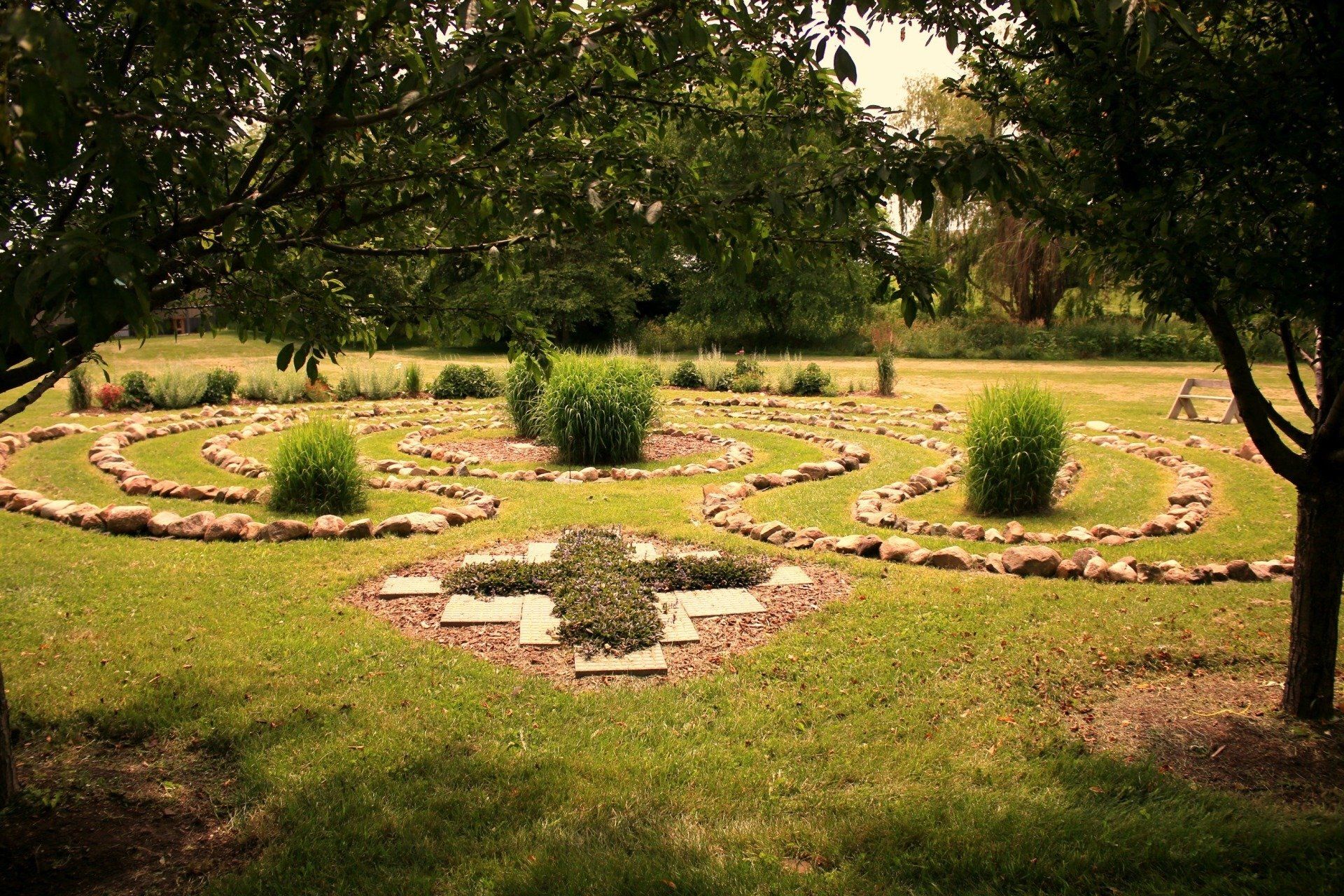
Slide title
Labyrinth
Button
Slide title
Hillside Welcome Garden
Button
Slide title
Arrival Shrub Garden
Button
Slide title
Cairn Sculpture
Button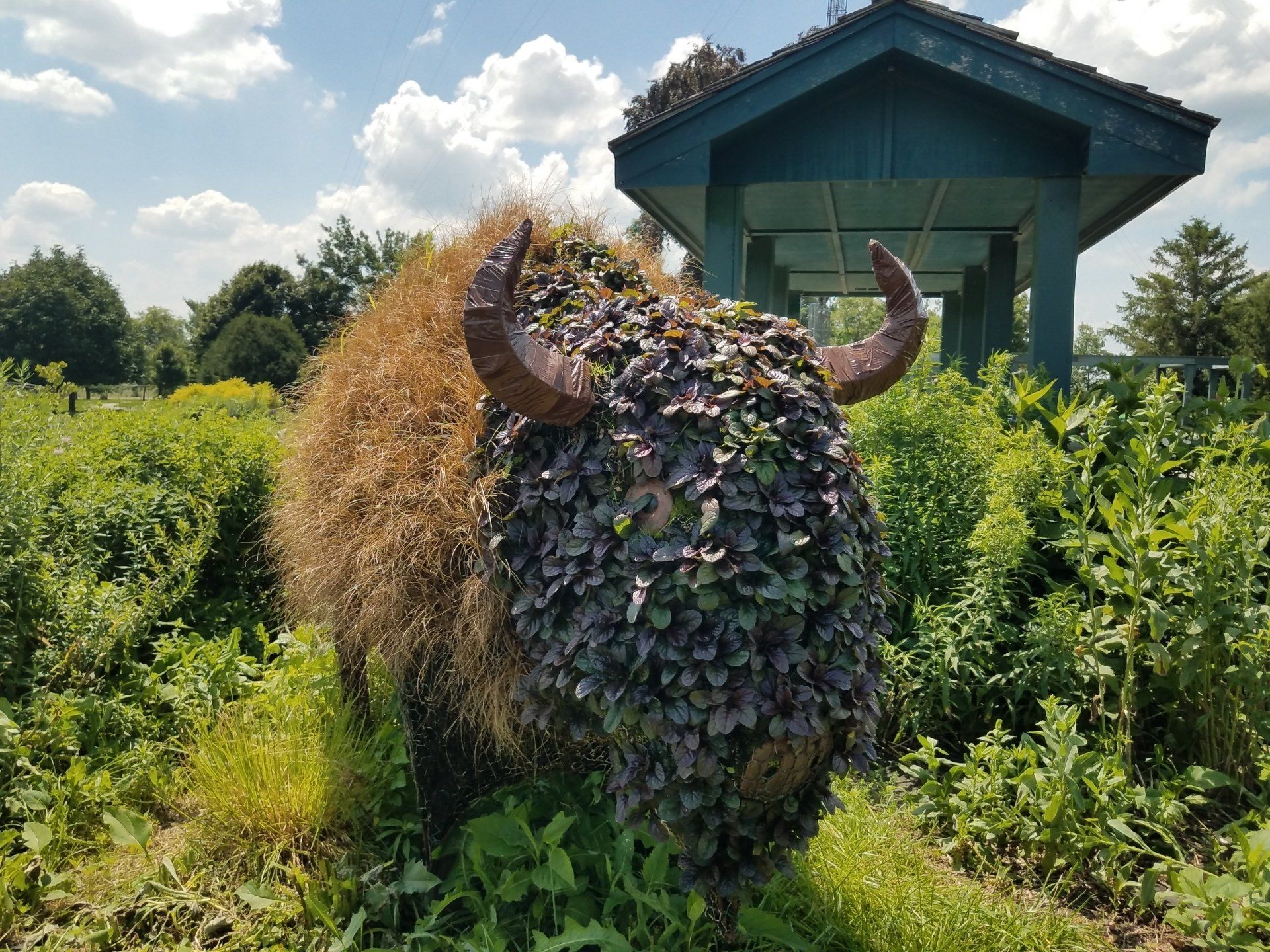
Slide title
Bison Mosaiculture
Button
Slide title
Perennial Plant of the Year Display
Button
Slide title
Annuals Display
Button
Slide title
Pergola in the Rose Garden
Button
Slide title
Rock Garden
Button
Slide title
Education Center
Button
Slide title
Children's Garden
Button
Slide title
Ornamental Grass Garden
Button
Slide title
Herb Spiral
Button
Slide title
Raised bed display
Button
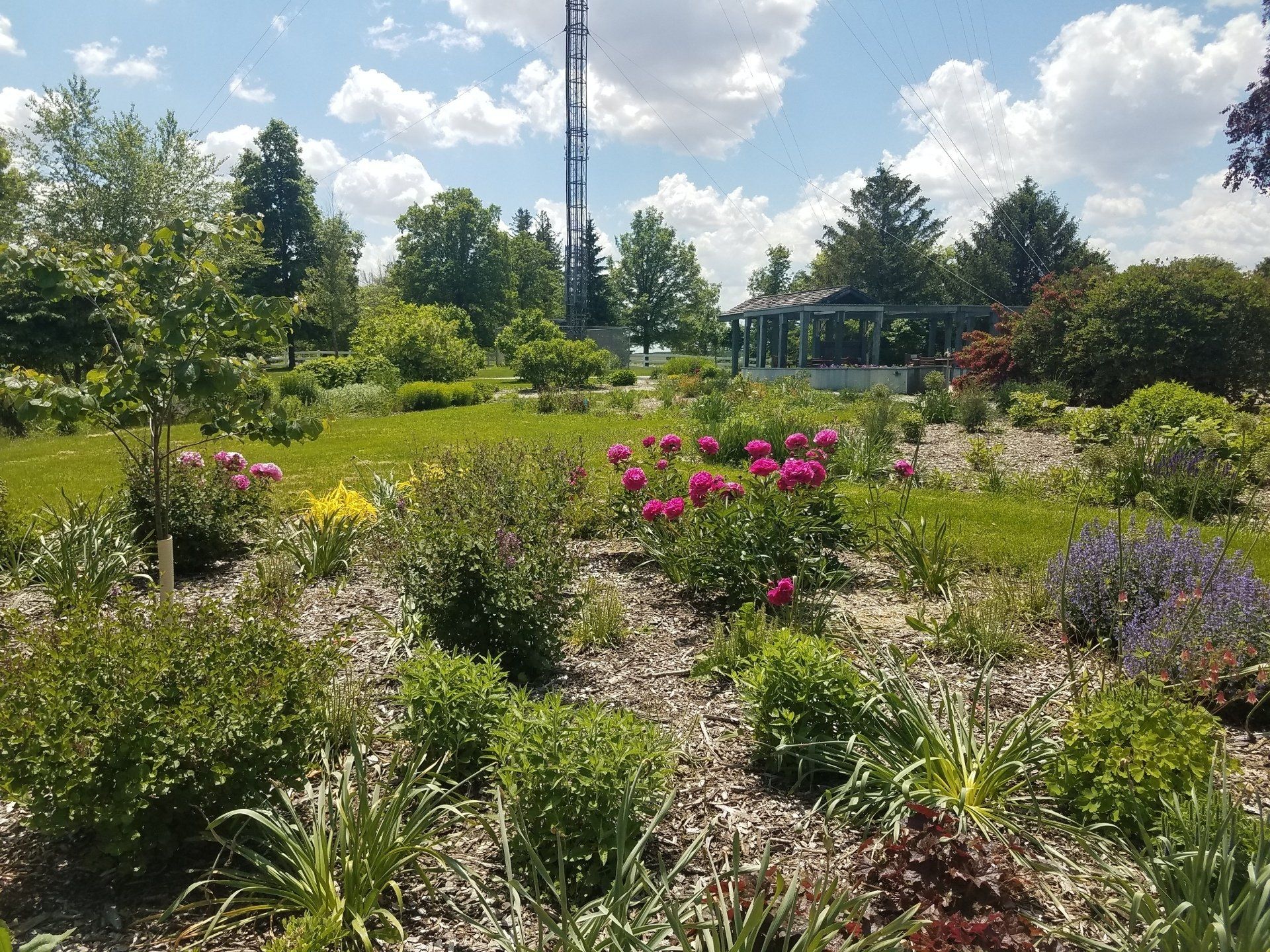
Slide title
Garden of Seasons
Button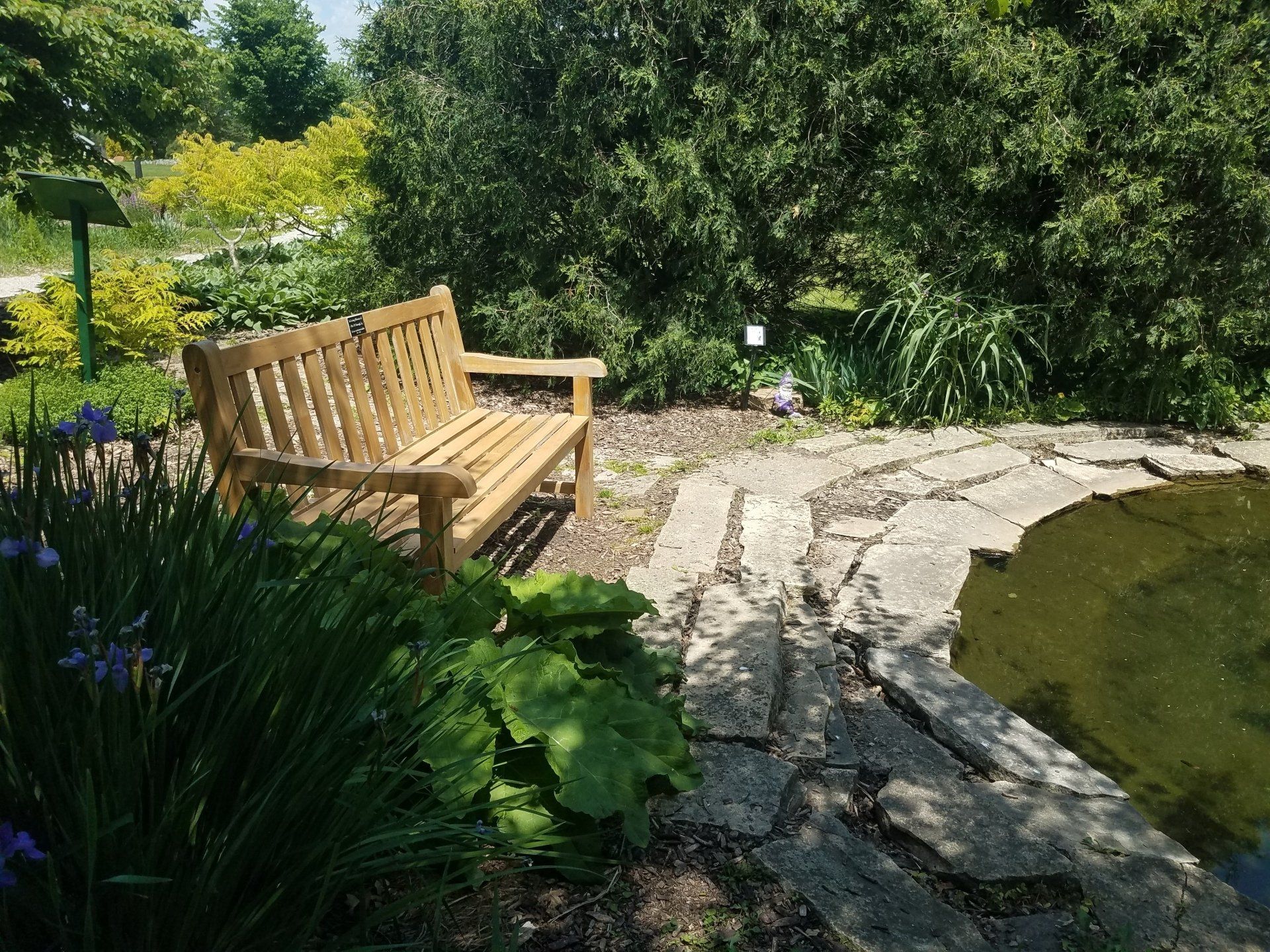
Slide title
Forget-Me-Not Pond
Button
- The Labyrinth
For those who have never walked a labyrinth, we would like to give some clarification of what comprises a labyrinth. The circle is the ancient universal symbol for unity and wholeness. The path represents creation; the center, love. Labyrinths are sometimes referred to as sacred spaces. When used as a spiritual tool for meditation, it is symbolic of the journey to the center of ourselves.
Unlike a maze, which can lead to confusion, the labyrinth only has one door and is known to bring peace, wisdom, healing, and joy. The best way to learn about the labyrinth is to walk one, with an open heart and open mind, and allow the experience to guide us.
- The Welcome Center
The Welcome Center is your one stop shop to pay your admission, purchase a membership, get way-finding information, access restrooms, and purchase souviners in the gift shop. One of the oldest buildings on the site, the Welcome Center was previously used as storage for maintenance equipment and transformed into the space it is today when the new maintenance barn was built.
- The Hillside Welcome Garden
This garden is the first that you will encounter during your visit to the Arboretum. Planted in a traditional cottage garden style, there are no formal patterns here - just a wonderful assortment of old favorites, such as coral bells and peonies. It includes a waterfall - a favorite photo spot for visitors - as its main feature, located alongside our beautiful, cobblestone brick patio, which is shaded by an eye-catching pergola. Walk through the arbor to head to our next garden.
- The Arrival Shrub Garden
The purpose of the Arrival Gardens are to inspire guests of the Arboretum with bushes and shrubs that can be planted along the foundation of their homes. The bushes, shrubs, and trees planted in this section are fairly common, but what makes this garden special is that there is such a large selection of mature bushes to admire.
- Cairn Sculpture
The Cairn sculpture is a unique piece completed by Greg Boom and donated to the Arboretum after Greg and his wife moved from Denver, Iowa to Cedar Falls. Greg was inspired by a piece from Andy Goldsworthy and wanted to use local materials to create a cairn of his own.
Each piece on the cairn is uniquely sized which required many hours of careful planning and placing as the piece made its way from Denver to its new home at the Arboretum. The Final piece was placed on June 13th, 2019 by Greg at a public unveiling ceremony at the Arboretum.
- Mosaiculture Displays
Each sculpture on display is a living work of art. Mosaiculture is defined as the art of composing a motif, an image, a picture, or a sculpture using carefully selected and pruned plants. Techniques for creating moasicultures inlcude using welded frames, chicken wire, or fishing line to provide a frame work for the plants to grow on.
- Picnic Areas
The Arboretum has picnic tables, shaded seating, and lots of open grass area for you to spread out and enjoy a mid-day meal. You may bring in your own food or purchase items like drinks, snacks, and sweets from the Arboretum's gift shop.
- Perennial of the Year Display
This display starts follows the fenceline outside of the Rose Garden and ends at the end of the fenceline closest to the Education Center. In 1990, The Perennial Plant of the Year program was started with the purpose of showcasing a perennial plant each year that outshined all of its competitors.
This garden showcases each Perennial of the Year winner dating back to the contest’s beginning in 1990. Visitors can stroll along these perennial beds and admire what has been deemed the best of the best.
- Annuals Display
Featuring plants of every color, the Annuals Display changes each season. During the spring the beds are filled with thousands of tulip bulbs. By the end of May, the bed is replanted with annuals to create an attractive and bright focal point in the gardens.
- Rose Garden
With our colorful variety of rose bushes, the grand entrance, and a picturesque pergola, it’s no surprise that The Rose Garden is our premier wedding location. This garden is surrounded on three sides by towering Arbor Vitae, creating a sense of privacy while still providing an outdoor venue.
- Rock Garden
This small garden is nestled between the Education Center and our Enabling Gardens. For the succulent-lovers among us, this is the garden for you! The Rock Garden is a wonderful mixture of rock formations and vibrant succulents. The garden also includes several types of hardy cacti, which can be seen in bloom during various times during the growing season.
- Education Center
The Education Center is connected to the Children's garden and houses 2 restrooms, a kitchenette with fridge, microwave, and counter space and a shady awning behind the building.
The Education Center has hosted hundreds of birthday parties, weddings, anniversay celebrations and more. The building can be rented out mid May through early October.
- Children's Garden
Explore our award-winning Children’s Garden! This garden is chock-full of adventures and areas to see. We have the Dinosaur Dig Sandbox, the Music Silo, outdoor kitchen, our Green Roof Playhouse, and much more! Feed the fish, dig up dinosaur bones, and make music in the Silo. This garden is perfect for all ages.
- Conifer Garden
Adding to the whimsy and magical feel of the children's garden, the Conifer Garden features dwarf varieties of common found connifers in Iowa.
- Ornamental Grass Garden
This display begins in front of the Education Center and lines the path heading to the Children’s Garden. It has a large range of different types of grasses, including Zebra Grass, Pampas Grass, and Little and Big Blue Stem. This display is a must – see for visitors searching for the perfect type of grass to complete their gardens at home.
- Herb Garden
Featuring a variety of herbs, this garden features traditional in-ground beds as well as an herb spiral and shows that every garden, no matter how big or small can provide great rewards for your kitchen!
- Raised Bed Display
These raised beds feature different veggies each season with repeat favorties including tomatoes, carrots, and zucchini.
- Garden of Seasons
Originally called the Display Gardens, this unique flower petal shaped garden was transformed over the years into the Garden of Seasons. The garden features plants that grow well from spring to mid-fall.
- Forget-Me-Not Pond
This garden was created in the honor of Iowa foster children and the families that care for them. This spot is an oasis for artists, families, writers, and readers. Many are drawn to the Forget-Me-Not Pond by the calmness of the waters. Of course, there is another reason to visit this pond – you can feed the fish! Fish food is available in the Welcome Center at the admissions desk.
- Tim's Garden
Tim's Garden came into being in 2002 when the Arboretum's board was looking for a volunteer to care for a garden space that had fallen into a state of neglect. Portions of the garden were reconstructed by Tim himself in 2007 as part of an overall garden renovation project, and he still maintains the garden to this day. The garden is divided into six categories: The Butterfly Garden, The Music Garden, The University of Northern Iowa (UNI) Garden, Peonies Plus Garden, The Clematis Crib, and The PPA Perennial of the Year Garden. Try to find each section on your next visit!
- Sesquicentennial Forest
As the very first area planted at the Arboretum, this space holds a special place in our hearts. The Sesquicentennial Forest planting was started at the Arboretum’s ground breaking ceremony in 1996. The Forest boasts many types of trees, but the special part of this forest is that all of the trees are Iowa native trees. Follow our Arboretum Loop Trail to walk through this gorgeous wood and experience the beauty that Iowa can offer.
- Iowa Native Prairie & Cedar Valley Monarch Zone
One of the more wild-kept areas of the gardens, the Iowa Native Prairie serves as integral habitat to snakes, birds, bugs, and other wildlife. Hawkeye Community College's Natural Resource Management cours students assist with prescribed prairie burns to keep the habitat healthy and enjoyable for humans and animals alike.
The area also serves as a partial habitat for the Cedar Valley Monarch Zones program at the Arboretum. The goal of the Cedar Valley Monarch's Zone is to restore pollinator habitat while re-establishing the monarch population and works with private and public land owners to re-establish the monarch population in Iowa.
- Hess Road Forest
Filled with wide trunk trees and lots of shady spaces to spread out and be close with nature, the Hess Road Forest is one of the oldest, orginially wooded areas on the property.
- Magnolia Grove
One of the Arboretum's newest plantings, the Magnolia grove is an early-spring bloomer and features different magnolia trees that grow well in Iowa. This spot is even more fun when a cool spring breeze makes it's way through and you're able to smell the sweet and fragrant buds.
- Butterfly Meadow
Our four acre Butterfly Meadow was planted in 2014 and houses over 20 different kinds of flowering prairie plants, each plant chosen for the specific purpose of attracting butterflies and providing food for pollinators.
Butterflies arrive in the area late May through early June. As an outdoor facility, we can not guarantee there will be butterflies visible during your visit.
- Crab Apple Grove
This grove features different varieties of crab apples (also called wild apples) that are commonly found in Iowa.
- Shade Garden
This garden boasts over 200 different types of Hosta, which is pretty incredible! This garden is surrounded by tall, mature trees, creating a perfect growing area for these shade-loving Hosta plants. Come while the Hostas are in bloom and experience the striking sea of white and purple flowers. There are several benches in the Shade Garden, allowing for a wonderful respite from the hot summer sun. Sit down, hang out awhile, and enjoy the peaceful atmosphere that is the Shade Garden.
- Stout Daylily Collection
This collection, planted in its current spot in 2013, was originally on the back side of our Shade Garden. It can now be found, planted in chronological order, along the path heading to the Shade Garden. This complete collection offers guests the experience of seeing every award-winning Stout Daylily all the way back to the start of the competition in 1950. During the peak of the summer season, when all of the lilies are in bloom, this is a can’t-miss spot in the Arboretum.
- Master Gardener's Orchard
Planted in 2015, the Master Gardeners Orchard includes four different kinds of fruit –apples, pears, plums, and cherries - and a magnificent, 20 ft. x 20 ft. gazebo complete with benches and a breathtaking, cathedral style ceiling. Once fully mature, our orchard will produce over 10,000 pounds of fruit a year, which will be donated to The Northeast Iowa Food Bank.
- Bee Hives
Maintained by the Cedar Valley Bee Keepers & students from Hawkeye Community College's Bee-keeping course, the bee hives are located near the Master Gardener's Orhard and the Butterfly Garden giving the bees easy access to much needed pollen and helping to keep the gardens growing. Depending on how production goes during the season, there may be honey from the Arboretum's hives available in the Welcome Center for purchase.

